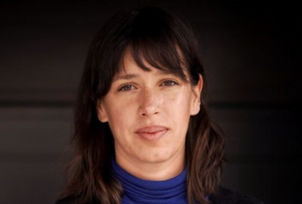
Daniela Cajías was born in Bolivia, grows between cameras, lenses and the laboratory for photo developing of her father at home. In 2021 she became the first woman in the 35-year history of the Goya Awards to win the award for best cinematography for her work in La Niñas. Her latest movie Alcarràs was the winner of the Golden Bear at the Berlinale 2022, for this work, Daniela has just received her second nomination for best cinematography at the 37th edition of the Goya Awards 2023.
You are a judge for the 2023 FilmLight Colour Awards. Why was it important to you to take part and what are you looking for in the entries this year?
I am interested in finding new or original proposals that subtly accompany the narrative and complement it.
Can you tell us about your relationship with colour and how it’s changed over the years?
I always go to the colour room with an idea, but it’s only when the film is finished that I know exactly how to complement the film’s narrative through colour. Over the years, the respect and enjoyment I have for this stage of the process of making a film only grows.
How did it feel becoming the first woman in the 35-year history of the Goya Awards to win
the award for best cinematography for your work on La Ninas in 2021?
It was a great emotion to see that a small and low-budget film could win such an important award. It encouraged me to continue being consistent with my vision and philosophy of work.
As for being the first woman in 35 years, I think it is a fact that speaks for itself about the reality for women in cinematography in Spain, but I do feel that this is gradually changing.
Can you tell us about the look on La Ninas?
For Las Niñas, our intention was always to transport the public to the ‘90s and keep it very close to the character of Celia, so that her great internal transformation could reach and move the viewer. We shot in digital and in the post-production work we tried to get closer to the Eastman colour of the ‘90s, separating the cold in low light and the warm in highlight by channels. We also added grain to move away from the neat texture of digital.
Your movie Alcarras was the winner of the Golden Bear at the Berlinale 2022, how did you approach the look and which references did you use?
Alcarras is an ensemble film where the cast is made up of non-professional actors, so the camera and lighting work is marked by this particularity.
We try to make the presence of the camera flow from character to character in terms of point of view. The lighting is always naturalistic, we try all the time not to notice that it is artificially lit.
As for the colour, the idea was to transport the viewer to that area of Catalonia where it is very hot – we wanted that heat to be felt. I was looking for that to feel. After watching the movie in Berlin, we added an extra touch of saturation so that the viewer feels comfortable watching the movie.
